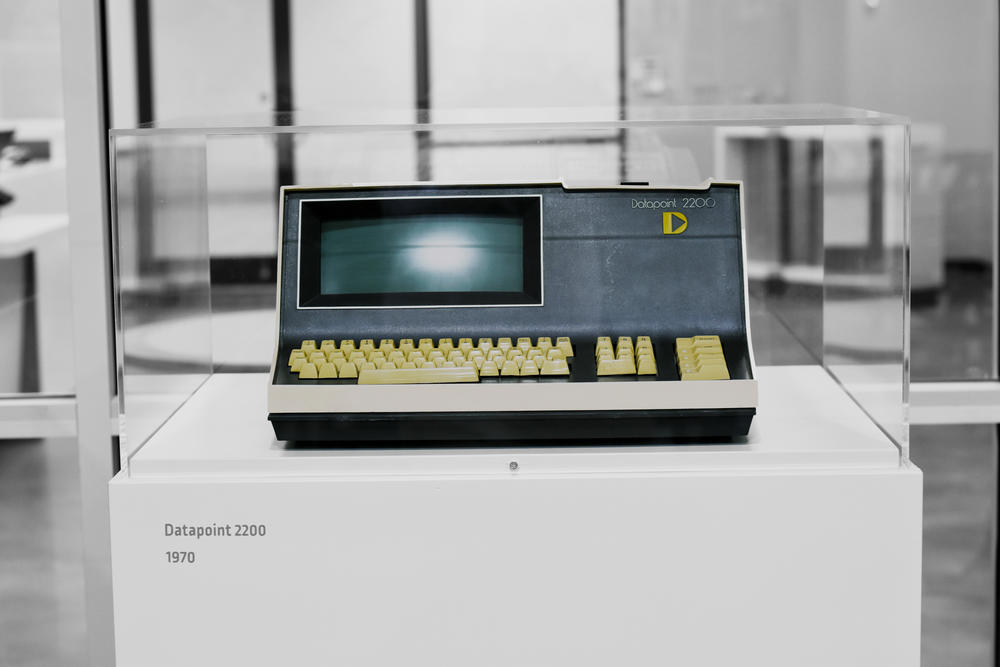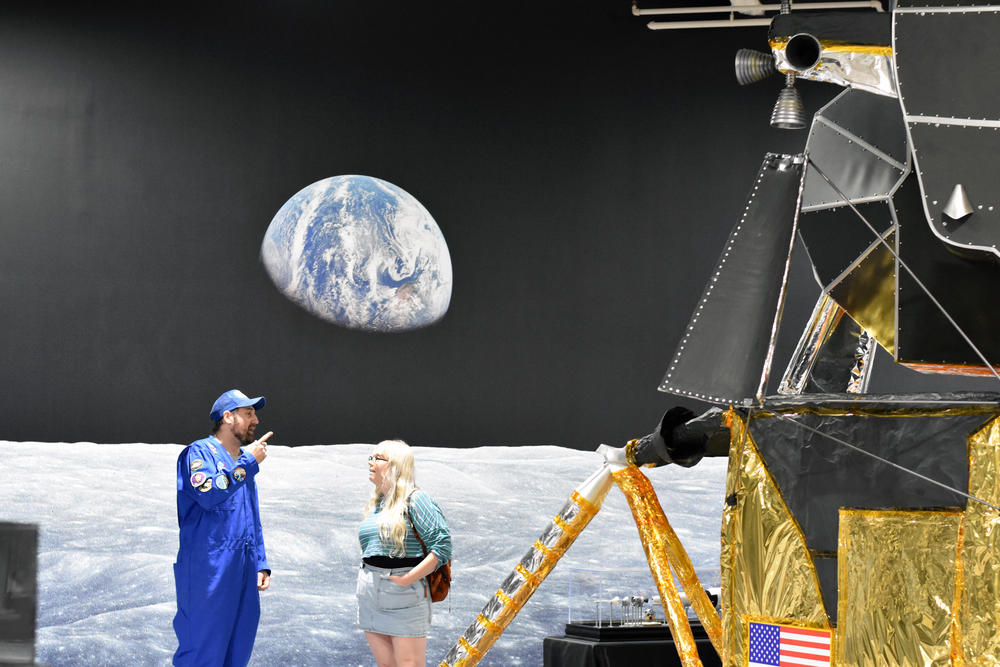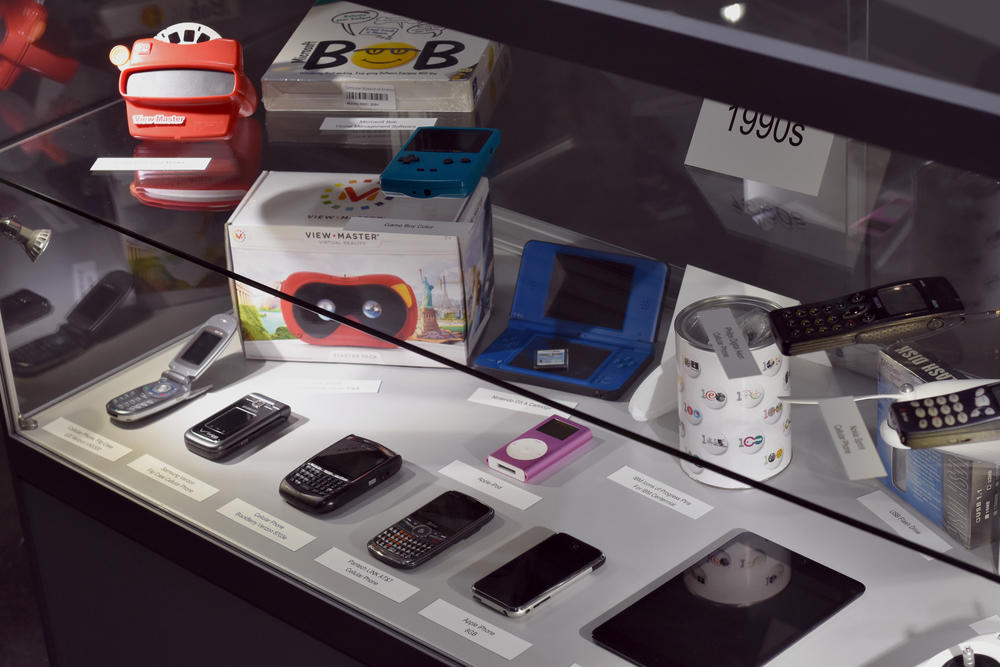Section Branding
Header Content
Can A Computer Museum In A Revitalized Strip Mall Unite Georgia's Technology Industry?
Primary Content
What do you get when you take a strip mall in a north Atlanta suburb, add a real estate developer with over a quarter-million pieces of computing and technology history and sprinkle in a region brimming with tech talent and company headquarters?
As you drive past the Big Lots and Shoe Gallery at Roswell Town Center and park around back, tucked between the outdoor mini golf and indoor laser tag, you'll see there is no punchline, just the newly-opened Computer Museum of America.
For now, it's more than 44,000 square feet dedicated to tech big and small, from the earliest microcomputers to the innovation that took us to the moon. But founder Lonnie Mimms and the CMoA team envision a world in the near future where the museum is an anchor for a revolution of sorts that unites the region's colleges, corporations and community to capitalize on technology's role in our society.
When you walk into the Computer Museum of America, the first thing you see is a gift shop. The second is a computer on a pedestal, ensconced in plexiglass. "Datapoint 2200, 1970," the placard reads.
"There's lots of stories that go behind every single machine that's in our display," Mimms said. "This particular one could even be considered one of the first microcomputers or personal computers."
Mimms is the founder of the museum and is the owner of more than 250,000 technology artifacts, from the sleek timeline of computers and other pop culture items on display to the floor-to-ceiling collection of BYTE magazines further in the museum.
He said his fascination with computers and technology came at a young age, when taking summer classes at Fernbank Science Center in Atlanta.
"We had a terminal that we dialed the phone, and we logged in remotely to a mainframe that was located somewhere in downtown Atlanta," Mimms reminisced. "So that was my first exposure to computers... and I was absolutely hooked to know that this machine was doing what you told it to do, and to be able to see the results instantaneously was was very exciting."
During the day, the affable collector is a successful real estate developer, heading up Mimms Enterprises. The company owns a number of buildings across the country, including the one housing the museum. The first phase of development occupies the ground floor of an old Burlington Coat Factory (an earlier pop-up version of the museum was in a defunct CompUSA), with eventual plans to have 100,000 square feet of event space, classrooms and exhibits.
'SOMETHING FOR EVERYONE'
The museum's current location isn't just because of the strip mall. Draw a map around technology hotspots in the region – like Georgia Tech, Buckhead, Alpharetta and Norcross – and Roswell is in the middle of it all.
Todd Peneguy, the chief advocacy officer at CMoA, likens the region to a dumbbell, and says bringing together all of the different cities and companies around technology and all it has to offer can strengthen the region as a whole. The museum is just a small piece of that, and he lists examples of ways they could impact the surrounding community beyond the artifacts.
"What if we repurpose this whole strip mall and put in the corporate offices, training centers, maker spaces, innovation centers, and then infuse that with the arts, bars and restaurants and a concert venue," he pondered excitedly, gesturing across a mostly-empty parking lot. "Then all of a sudden you have something that's really cool, that's really exciting, that people go, 'You have to go there!'"
On opening day, there will be something for everyone. Visitors can see the computer timeline, an array of massive supercomputers and take an in-depth look at the tech behind the first moon landing.
But Peneguy says that’s only the beginning. Future plans for the space include exhibits that will help people understand how technology has shaped their lives.
“We could have ag tech, fintech, health tech, cyber tech, sports tech, entertainment tech, logistics tech... and the exhibits can be rotating time and time again as we appeal to different audiences,” Peneguy said.
For example, he said you might not think a NASCAR fan would be first in line at a computer museum. But one day there could be an exhibit dedicated to the technological intricacies of the powerful racing machines.
Lonnie Mimms’ wife Karin serves as vice president of the museum, and says making sure a wide range of different audiences are served is a top priority.
“We are the embodiment of the 80/20 rule," she told me. "About 20% of the population is a brainiac nerd, understands when you take the covers off the machines of how they work, and that's great.”
But she said there also has to be something there for the other 80% whose lives are impacted by technology but might not care as much.
'MAKE IT COME TO LIFE'
Acquiring the collection may have been the easy part. Fundraising, building an audience and getting bodies in the door will continue to take work.
"A lot of the story has not been told yet... we need to gain more community support and corporate support so that we can really tell these stories and make these items come to life," Karin Mimms said.
When you look at the hulking Cray supercomputers, the Apple I or the various knickknacks, many items have a little reader board of information, but the staff hopes to add interactive technology that not only tells museumgoers what they are looking at, but also how it was used to create the world we live in today.
At a pre-opening event, a few hundred people mill about and take in the sights of the museum’s first offerings.
An older couple reminisces about their first personal computer, a teenager takes a selfie by a life-size replica of the Apollo lunar module and suited tech enthusiasts marvel at an early Cray supercomputer.
Karin Mimms hopes everyone leaves with a feeling of inspiration and meaningful connection to the future.
"Otherwise these items are boat anchors," she said "If you can’t make a correlation on how these were relevant and how they’re relevant today, who cares?”
Only three hundred or so of the Mimms’ quarter million artifacts are currently on display but the museum plans to rotate the exhibits frequently, so each visit to the museum is almost guaranteed to be different.
Next up? A “living, working exhibit” where guests can interact with pieces of tech history and hear more about how they influence the tools we use today.




